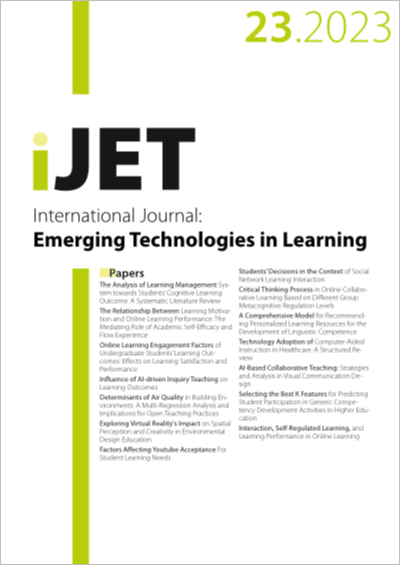Exploring Virtual Reality's Impact on Spatial Perception and Creativity in Environmental Design Education
DOI:
https://doi.org/10.3991/ijet.v18i23.45637Keywords:
virtual reality (VR); landscape education; spatial perception; creativity; entropy weight method; TOPSIS method; structural equation model (SEM)Abstract
Virtual reality (VR) technology has been widely used in various industries, and its potential in the field of education has been increasingly recognized and explored in recent times. In environmental design education, spatial perception and creativity are fundamental skills for students. However, there are certain limitations in certain aspects of current evaluation and teaching methods. In light of these concerns, this study aims to reassess these methods and investigate ways to improve the fundamental competencies of students through VR-based landscape education. At first, the entropy weight method and the technique for order of preference by similarity to ideal solution (TOPSIS) method were adopted to develop a new evaluation system for assessing students’ spatial perception and creativity. Then, the influence mechanism model of landscape education on students’ competencies was constructed and validated. At last, the results have verified that VR technology can effectively enhance students’ spatial perception and creativity.
Downloads
Published
How to Cite
Issue
Section
License
Copyright (c) 2023 Nan Zhang (Submitter); Yu Xiao, Yong Wang, Fangzhi Guo

This work is licensed under a Creative Commons Attribution 4.0 International License.



